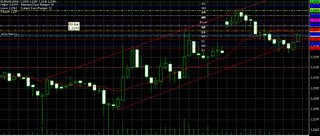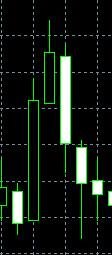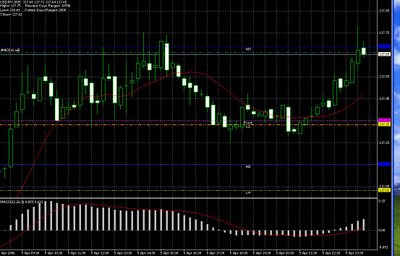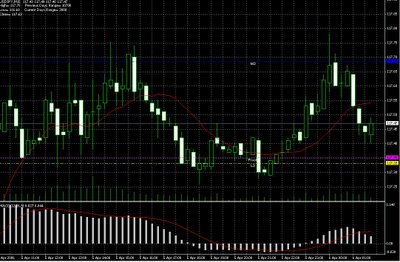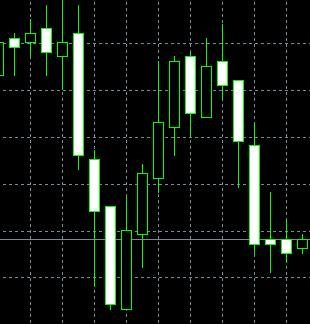What are we going to need to get started?
We are going to require a decent computer with a fast reliable internet connection. Trading software. I use
meta-trader 4, which has all the charts and functionality you will need – and it’s free!
A broker account. There are a number of reliable brokers out there. I use
Interbank FX but any of the popular brokers will suffice - providing they meet the requirements below.
What requirements do we need? Well I would say we need the following.
1)Honesty
2)Reliability
3)Security of Data and personal information.
4)Functional software integration
5)Minimum slippage
6)Charting packages
7)Reasonable bid/offer spread
8)Both Mini and Standard accounts offered.
9)Demo account
1 & 2 can be researched on the many forums (try
MoneyTec &
Money Maker )
Number 3 is important, as you will eventually have real money in the trading platform. Call the company if they have a contact number and ask about their security measures. Their sites probably have this info also – DO YOUR DUE DILLIGENCE THIS IS IMPORTANT! Here is a Link to
Interbank FX’s FAQ page where they answer some of these questions.
4. Does the software (
MT4 for example) integrate into your account? Or do they have their own software. This may be a bit of a bind later, if you decide to change brokers and have been using their proprietary dealing platform.
5) Minimum slippage. This is the difference between the price shown on the screen and the price you actually end up paying when the order is placed ( as well as the spread of course). Again, you can try asking them if there is any slippage. Ultimately, you won’t really find out until you start using the platform. I’ve found using
MT4 on
Interbank FX to be pretty seamless, and they claim zero slippage.
6)Charting packages again won’t be a problem if you go for
MT4, as the software contains everything you need.
7)Bid/Offer spread is the difference between the price you see on screen and the price you pay. This is one of the ways the broker makes his money.
EG;- if the spread on the EUR/USD is 2 pips/points and the price on the screen is 1.2265 to place a buy order you would pay 1.2267 (2 pips over) to place a sell order you would pay 1.2263 (2 pips under) . N.B. Spread varies according to currency pairs, so always check before you enter a trade to see if you think the spread can be covered by the expected move.
8)Standard accounts usually have a $5000 minimum opening deposit. Whereas Mini accounts have much lower minimums. Usually around $250 , but sometimes much lower.
9)Demo Accounts are essential if you are going to learn to trade effectively. Even after you are an experienced trader, you will want to keep a demo account for practicing your new theories. To begin with you are ONLY going to be trading on a demo account with fake money. That’s if you are sensible – which I’m sure you are!
As Promised I'm going to attempt to publish details of some of my trades. Here's a recent trade on the EURJPY.
Fig:1(click to enlarge)
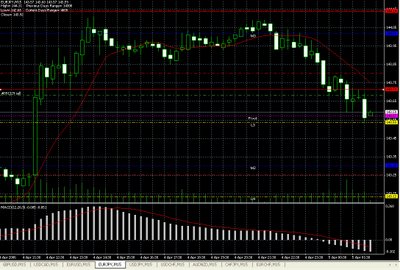
As you (hopefully!) can see in the above image, I had noticed the pair trading sideways between 143.71 & 114.40 - this is indicated by the two red lines I placed on the chart. As I saw a drop below the channel appearing, I waited for confirmation that this was indeed a breakout from the trend and entered my trade at 143.68
Fig:2(click to enlarge)

Our trade does indeed progress in the anticipated manner until it reaches 143.38 . Here we notice that the (downward) trend is again broken and we decide that discretion is the better part of valor - closing our trade @ 143.47 this gave us a profit after spreads of 21 pips or $210 per standard lots (I had 4 lots on this particular trade)
In my opinion this was a great example of the adage " the trend is your friend" We didn't go against the trend when it was going sideways, we went with it as it fell (Fig 1). Again when our downward trend was broken (Fig 2), we closed out and took our profits rather than hoping it would return to our downward trend.
OK that's it for today, Good luck!
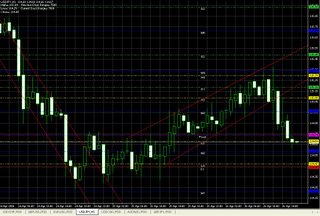 In our picture, as the currency bounces up from our support it crashes right through our resistance. However, as we are being prudent we wait for confirmation that it is a true breakout. Confirmation does not come as the next two candlesticks from our breakout are bearish. After a short return to the downward trend we see a series of bullish indicators and watch the trend reverse over the next couple of hours (while we sit on our hands and do nothing!) Confirmation of the bullish move - to my mind - comes after the hollow spinning top. With our growing knowledge of the Japanese candlesticks, we enter our buy trade. Take quick profits or watch the trend develop, depending on your risk tolerance. I took quick profits - sure enough shortly after I cashed, out the developing upward trend fizzled out and dropped through my support line.
In our picture, as the currency bounces up from our support it crashes right through our resistance. However, as we are being prudent we wait for confirmation that it is a true breakout. Confirmation does not come as the next two candlesticks from our breakout are bearish. After a short return to the downward trend we see a series of bullish indicators and watch the trend reverse over the next couple of hours (while we sit on our hands and do nothing!) Confirmation of the bullish move - to my mind - comes after the hollow spinning top. With our growing knowledge of the Japanese candlesticks, we enter our buy trade. Take quick profits or watch the trend develop, depending on your risk tolerance. I took quick profits - sure enough shortly after I cashed, out the developing upward trend fizzled out and dropped through my support line.


